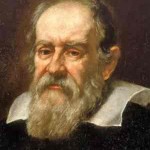
Digital News Report- The 100 Hours of Observation event is quickly approaching as part of the International Year of Astronomy. Between April 2nd and April 5th, events will be taking place across the globe to celebrate the event.
The 100 Hours of Observation Cornerstone Project will be kicked off with a VIP event at the Franklin Institute in Philadelphia. The Director of the Institute and Museum of the History of Science in Florence, which holds the two remaining Galileo telescopes, will speak on the importance of Galileo’s telescopes and the discoveries he made with them. Galileo first created the telescope 400 years ago.
You can view webcasts at the official website during the 100 hours from 80 different observatories around the world. The University of California’s Lick Observatory, which discovered the first non-Galilean moon of Jupiter in 1892, will be presenting live on April 4th at 1:00am and 8:00am. Each webcast will last 20 minutes. For a full schedule of all of the observatories, visit their website.
Lightbuckets has announced their contribution to the project, “100 Hours of Remote Astronomy.” People will an opportunity for a 30-minutes “Test Drive” at their website using either of their two satellites. You can request the free Test Drive on their research-grade 24″ Ritchey-Chretien telescope located in Rodeo, NM and their 14.5″ Ritchey-Chretien located in Pingelly, Australia at their website. The service usually costs $50-100.
“We are thrilled to be able to participate in this global event that will bring astronomy to the masses,” said Steve Cullen, President and CEO of LightBuckets. “As the leading provider of online telescopes, we are honored to fulfill the online astronomy component of the 100 Hours of Astronomy activities.”
